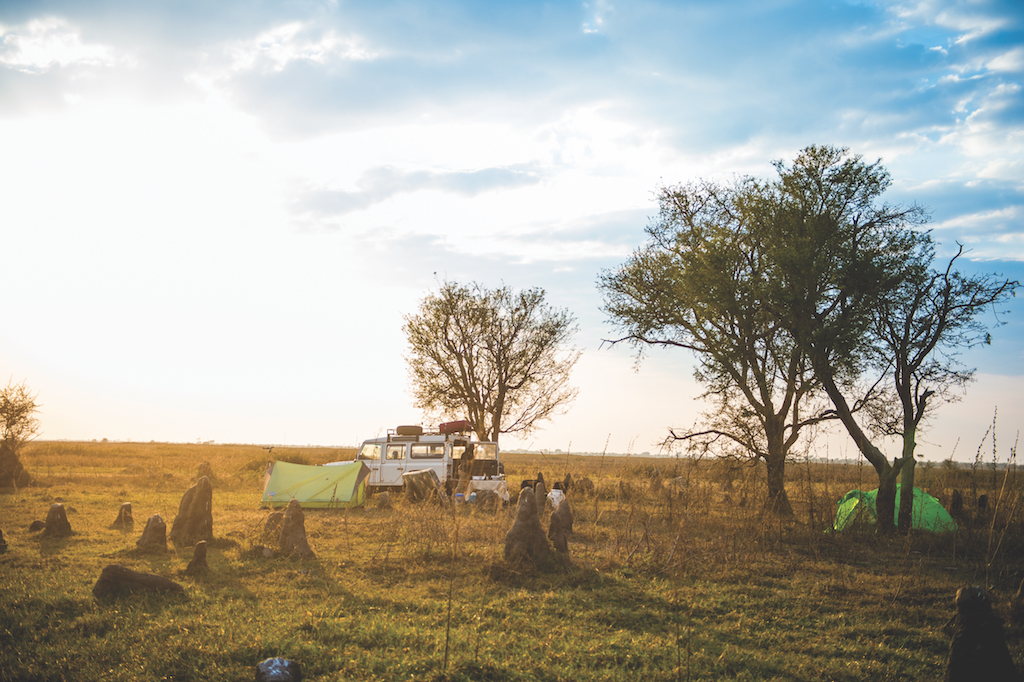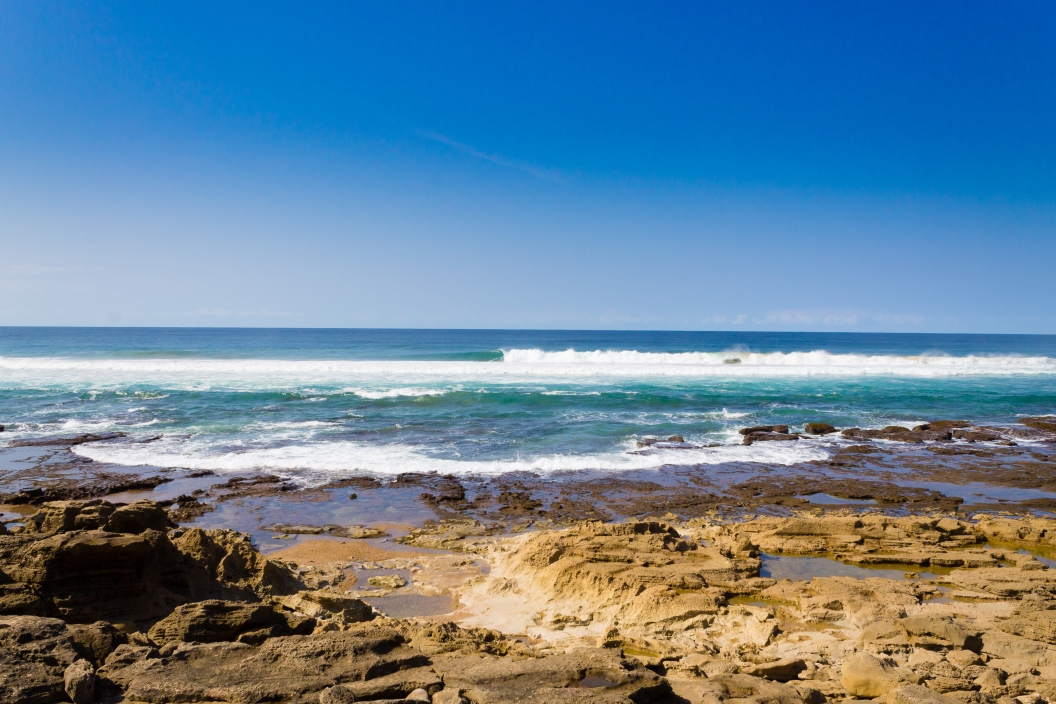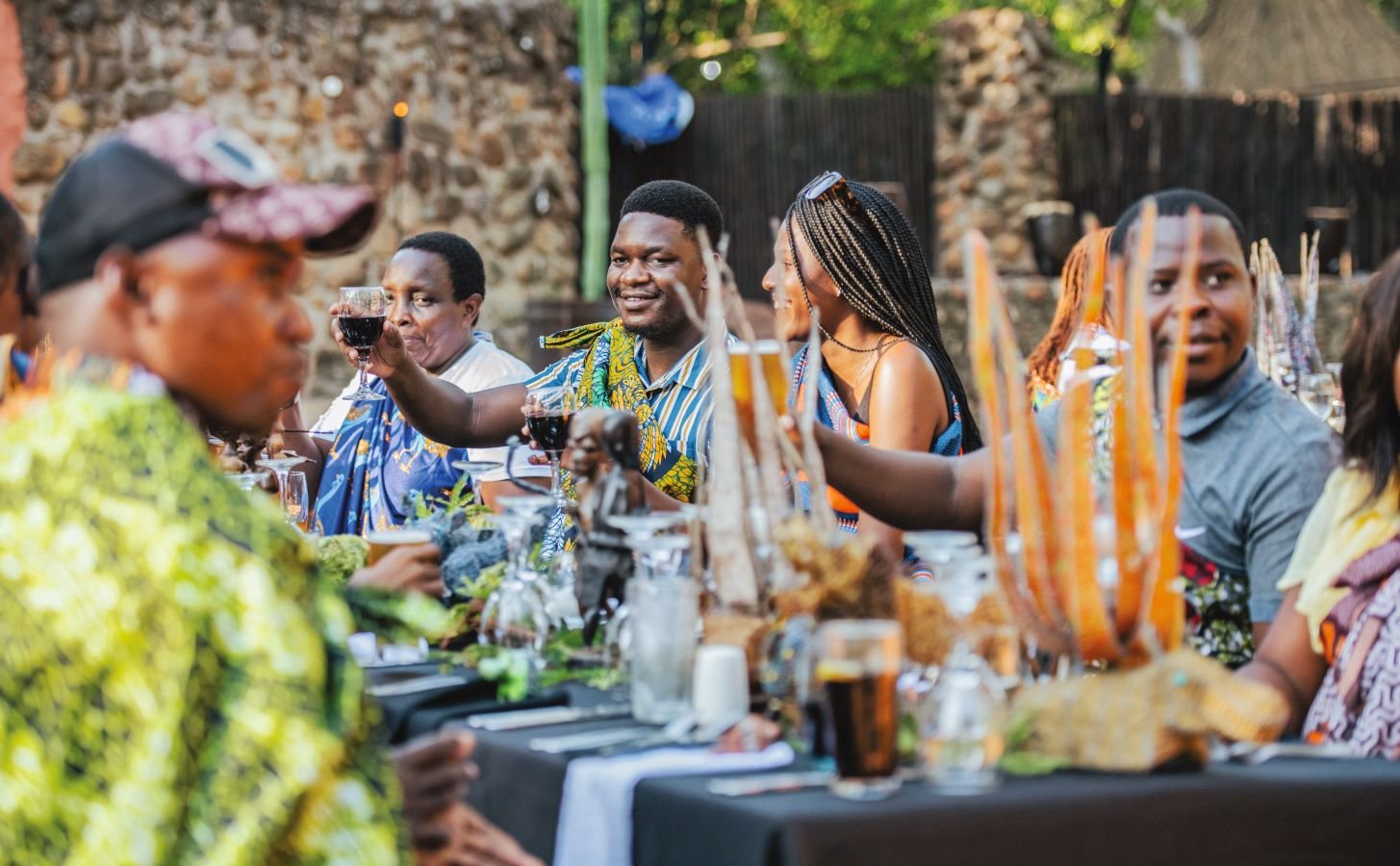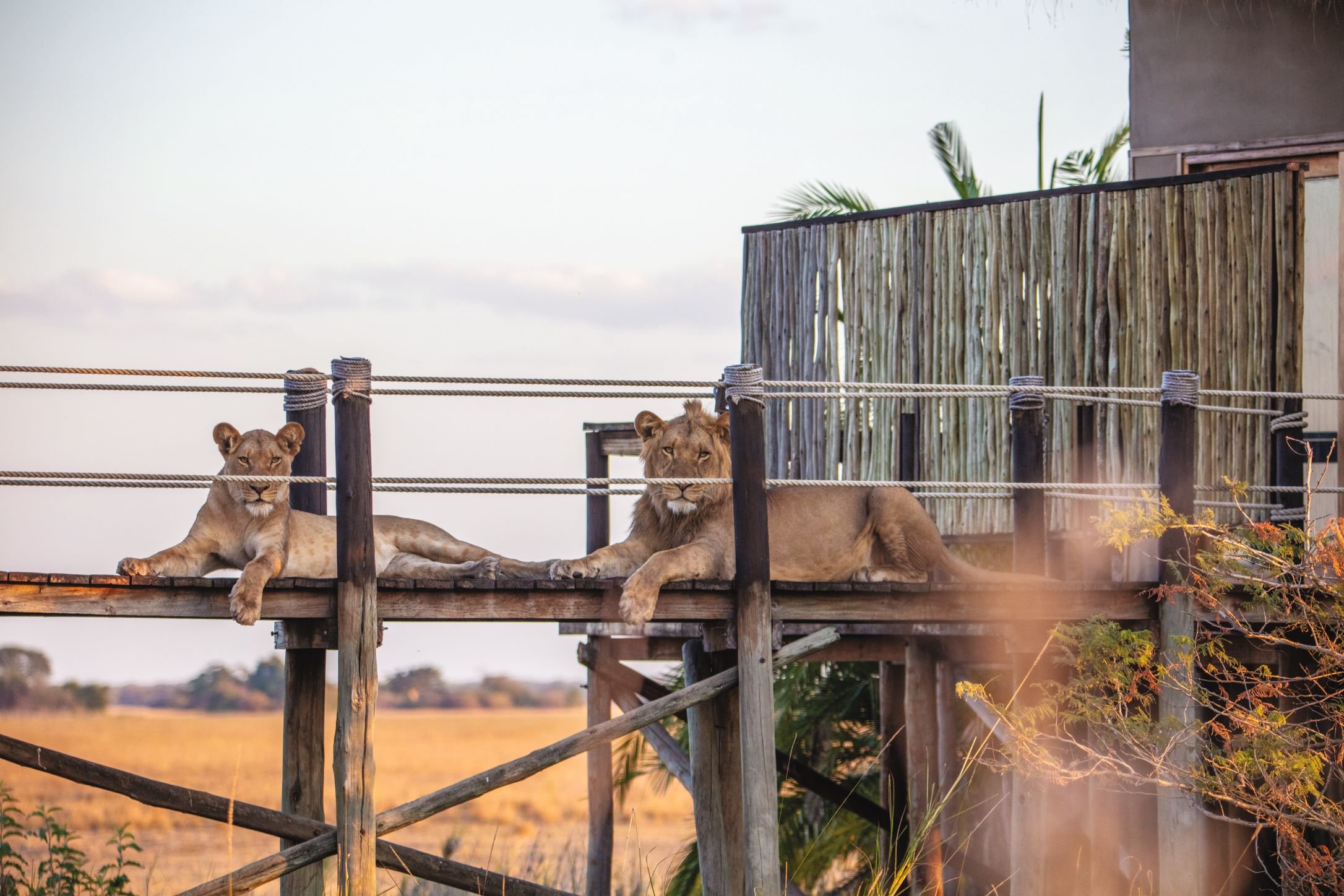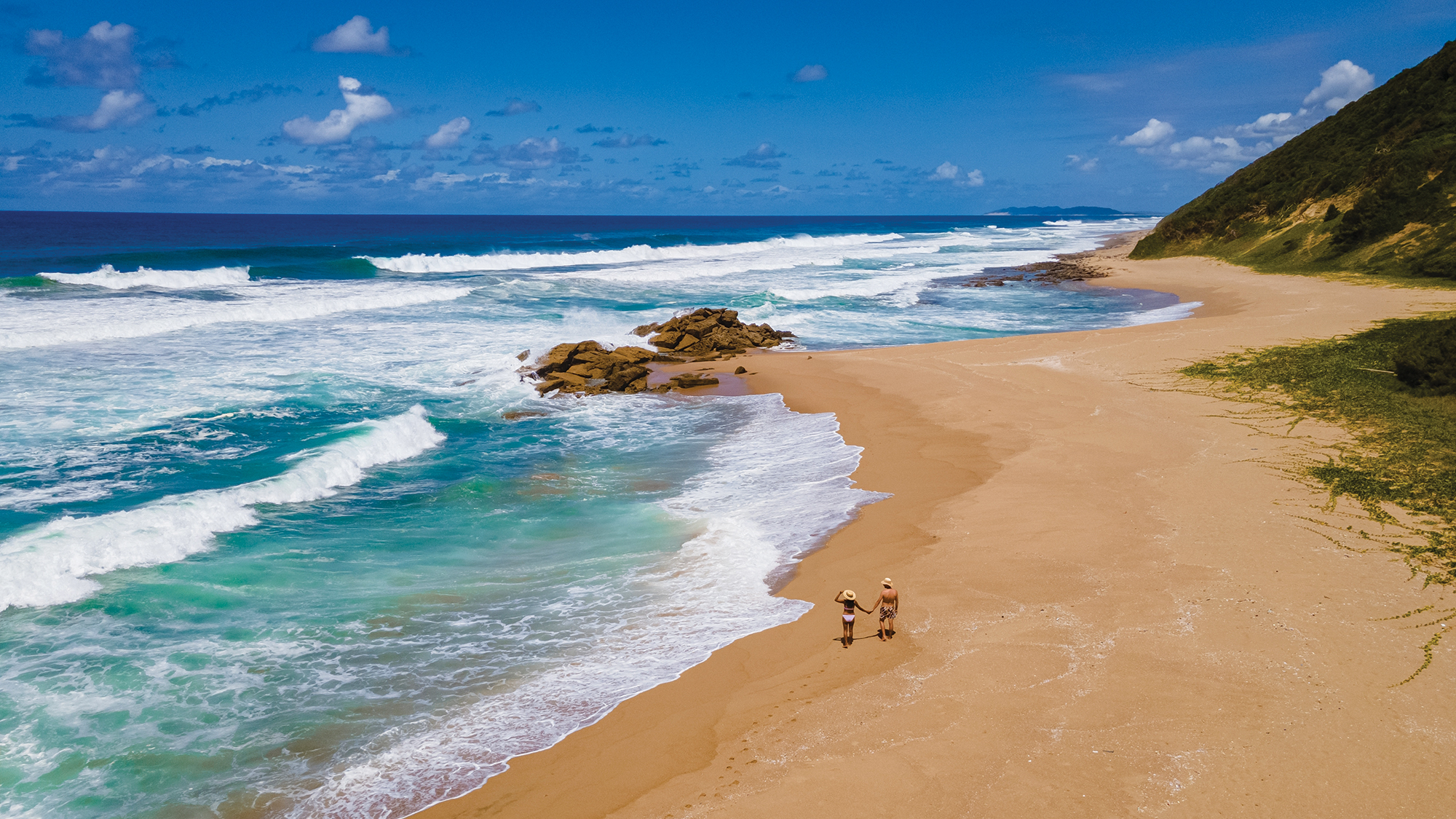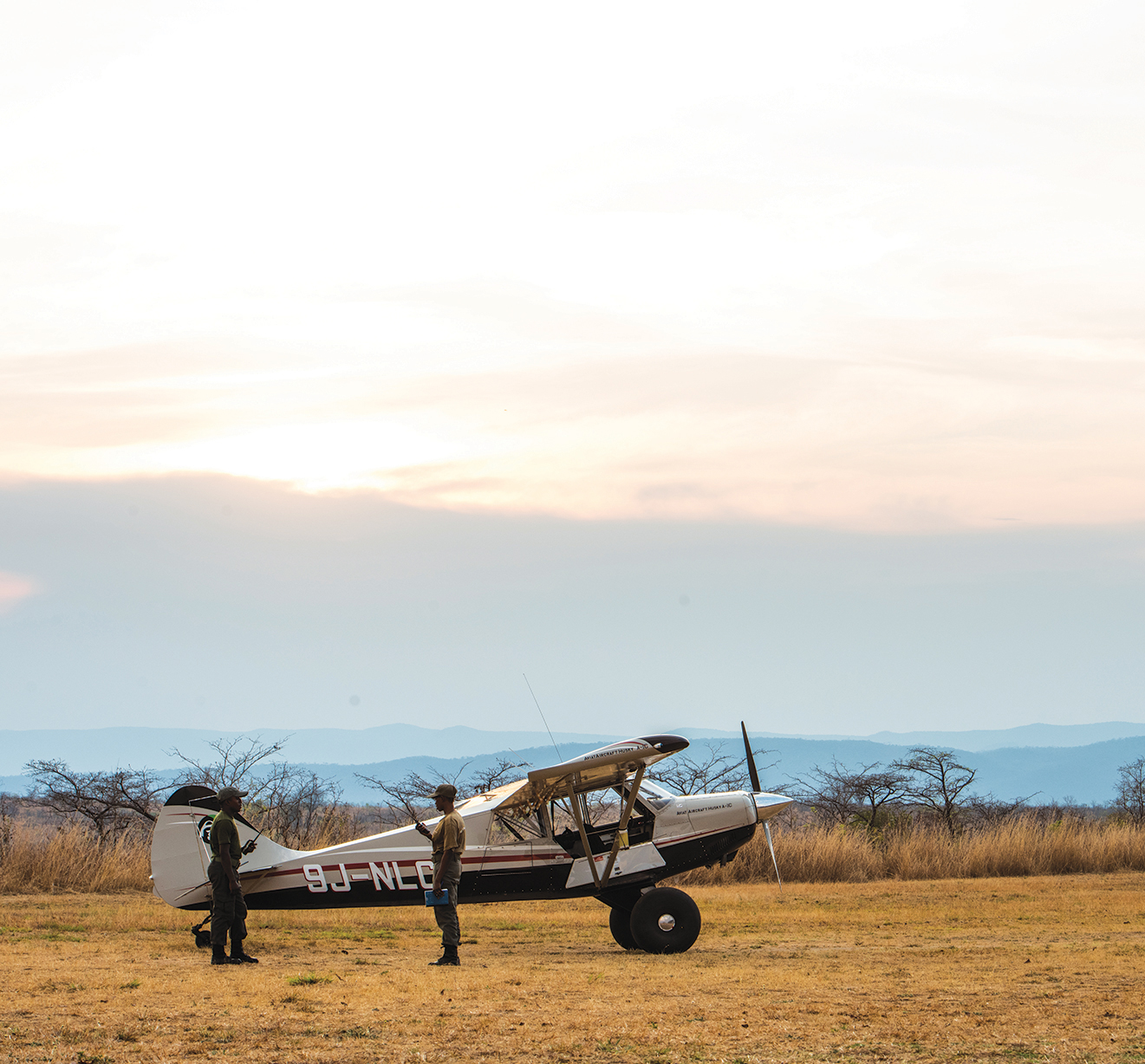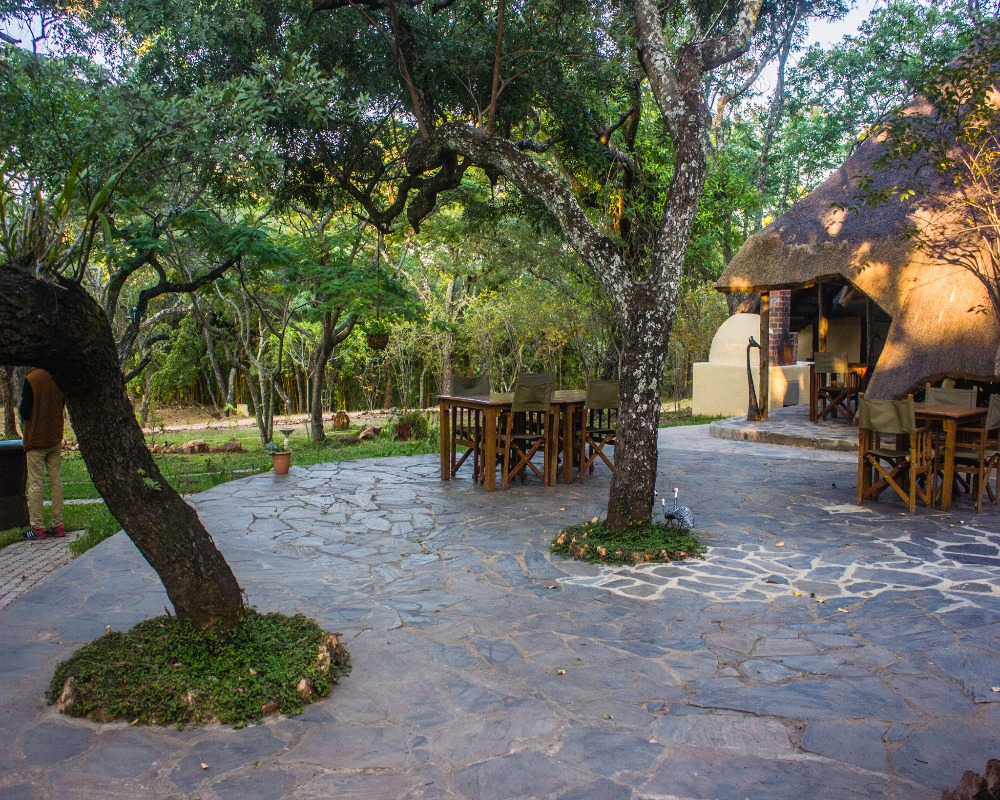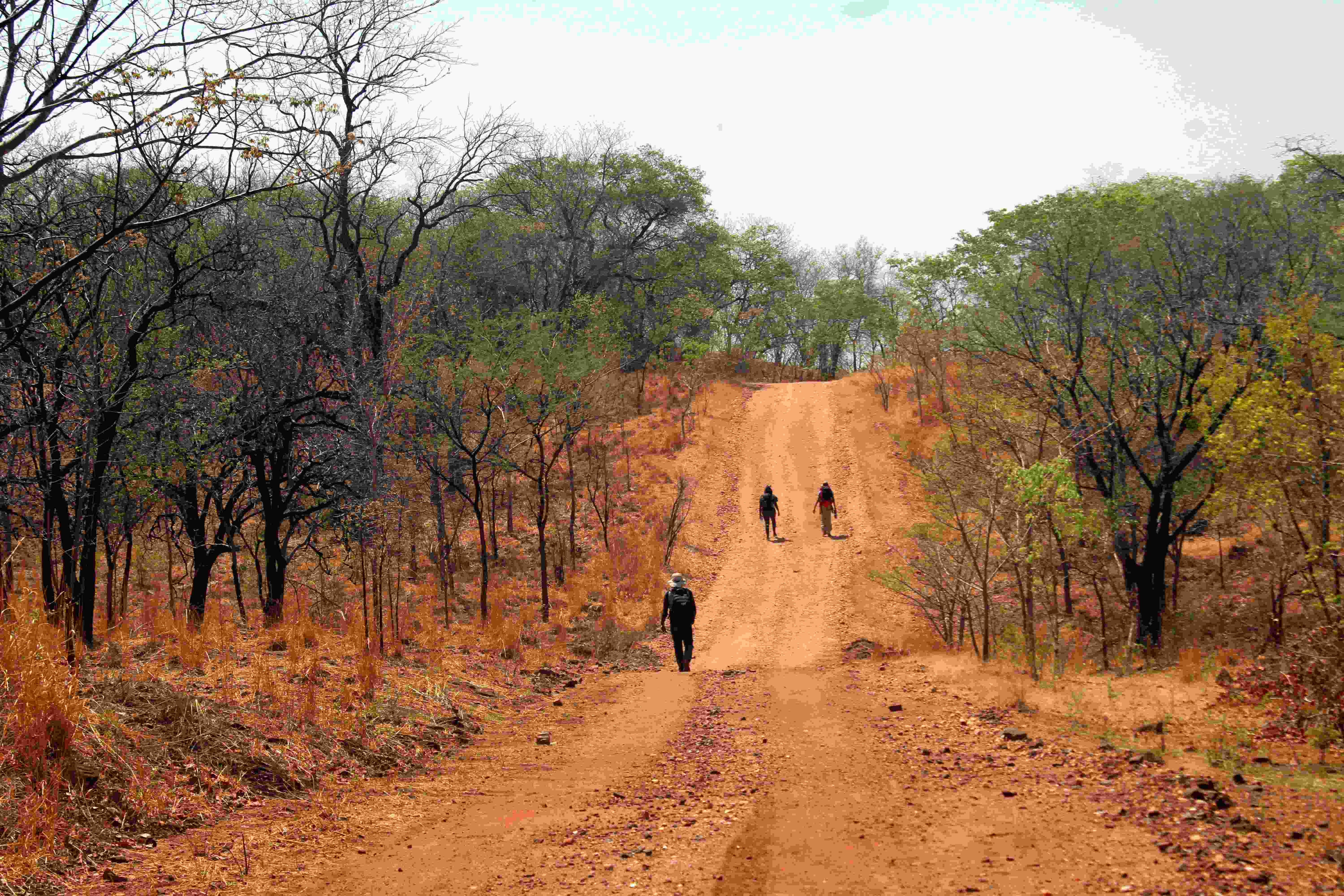When we got to ‘Cheapest Mini Mart’ to get some supplies, our guide left the doors of his beat up Land Rover unlocked.
“If someone steals [anything], they’re not local,” he said confidently walking into the store. Wilfred Moonga has been area warden for the Lochinvar National Park for the last two years. He knows Monze—the Southern Province town just outside the park—and Lochinvar like the back of his hand.

“Before the area was gazetted to a national park, a Scottish family owned a cattle ranch [there],” Wilfred said referring to the origins of the park’s name. It is named after a lake in Scotland. And before this, the land was home to late stone age and early iron age settlements. The park is now home to over 420 recorded species of birds and various antelope, the most notable being the Kafue Lechwe, which you can only find at Lochinvar and areas along the Kafue flats.
His knowledge of the park and its inhabitants was unparalleled. Wilfred said the wet season is the best time to visit the park. It is when you witness birds migrating from as far as Russia. These birds, including various species of duck and stork have to travel across harsh terrain like the Sahara desert.

Lochinvar House, not yet open to the public and undergoing minor renovations, used to be a farmhouse. Its red brick pre-independence design has been maintained on the outside, with modern plumbing and fittings on the inside. The house was built in 1905 and had slowly been dilapidating with delinquents using it as a smoking hideout and scrawling graffiti on its walls. Wilfred decided to convert it into lodging. The construction has not been easy, with sections of the old house having to be built brick-by-brick and the wooden floorboards replaced. It now boasts 9 self-contained rooms and a bar. The kitchen has been fitted with a stove and visitors that book the place can carry food for a self-catering experience. A little distance from the main farmhouse was a former abattoir where overcrowding Lechwe would be cropped. The abattoir had now been converted into a small church that some of the workers at the park attend. Funny how a house of slaughter had now become a house of salvation. The park’s land has really evolved through time.

It is essential that visitors to the park drive 4 x 4s with high ground clearance. Most terrain is near impossible to traverse in a saloon car. The rugged Land Rover we were in rattled as we went over bumps and mounds, making quick work of the rough roads.
We parked the vehicle and walked through long grass to get to the Gwisho hot springs. Contrary to popular belief, the Gwisho hot springs are not in one cluster but are dotted around a specific area. As you approach a spring, the ground gets damper and even muddy.

Salt deposits sit around their edges and in dried up soil. The springs can reach temperatures of up to 90 degrees Celsius and some even had dead birds and insects in them. The cooler springs serve as picturesque watering holes for Zebra, wildebeests, baboons and other animals in the park. They are lined with long green grass and palm trees, the stuff of beautiful desert mirages in pop culture.
“So for me, the path and ground ahead of me are my current affairs,” Wilfred said breaking our silence. “The natural scribes tell me what happened.” He was referring to the dung and animal pellets we’d find littered on our walking route. Our guide could tell which animals had left the droppings and how long ago just by looking.
Sitting somewhere amongst all this is Sebanzi Hill. After the discovery of late Stone Age and early Iron Age settlement artifacts, it was declared a national heritage site. The land that the national park sits on has been through many phases. It is a living and evolving entity dating back a few thousand years. Age-old trees have grown on the steep and rocky hill, including the ghost-white paperbark. Each of them has a story to tell. Of all the Sebanzi Hill trees, the mightiest is a baobab that stands at its very top. This colossal thing has witnessed the change in the land for close to 2500 years. It is a librarian of the earth; Gaia’s own curator, recording all that occurred as time spanned.

Locals herded their cattle in the distance, entering the park and letting their cattle feed on the long grass and drinking from the hot springs. Some herders even relaxed in the hot water. At Bwanda Hot Springs, we found a man taking advantage of the natural occurring spa. He quickly tried to evade us when he heard our voices and saw the grass and leaf inspired uniform of Mwanza, our designated ranger.
“Why are you running away,” he asked the man in Nyanja as he pursued him. People aren’t allowed in the park without a permit. And for good reason too. Poachers are the scourge of the animals.
A number of animal species around the world are extinct because of poacher activity. Here at Lochinvar, certain warthogs and eland are no more because of man’s greed. Animal pelts, flesh, ivory and other horns fetch hefty sums of money. The United Nations and Interpol state that illegal trade of global wildlife is worth nearly $213 billion a year and is even helping fund armed militia. It’s no wonder Wilfred and the other members of Department of National Parks and Wildlife are adamant about curbing the poaching problem.
But poaching is not the only threat to this environment. We learned that the Mimosa Pigra, a dense, thorny, impenetrable thicket is causing trouble for the ecology of the park. Wilfred spoke of its invasiveness with a disdain that was visible in his face. “This plant grows along the water and prevents the animals from accessing it,” he said. Native to South America, it has been listed as one of the world’s 100 most invasive species. Adding weight to this theory was Shatis Vlahakis, honorary wildlife conservationist and animal enthusiast.
“I’ve been a conservationist from 1976,” he laughed. He believes though poachers may be responsible for a number of animal deaths, our own actions as communities have changed the environment’s constitution. “Okay, poaching has a certain percentage. But I think, to me, most of the animals here… like the Lechwe population has gone down, because of the natural interference of what the natural habitat has been,” he said. This includes building dams, fishing and the introduction of foreign plants and animal life. “Look, I needed to… somehow in my life, make a hobby of how to protect some of the species of animals that we don’t see as vulnerable,” he said about his journey into conservation. He’s been coming to Lochinvar since the seventies; had his wedding and honeymoon here and even has a tree named after him. He’s been enchanted by the spell of the land for decades.

Before sunset, we set out to see the famous Drum Rocks. These rocks are said to have been instrumental in the performance of rituals in the area. Long ago, as people herded their cattle from the plateau to the floodplains for grazing, they would beat the rocks, producing a reverberation they believed would ward off predators and spirits. I imagine there was a lot of mysticism here. Wilfred also told us of a headman that struck the bark of another baobab tree near the Drum Rocks with a magical staff. The thick tree split and has a small cave-like hollow that was later used as the office for the British Governor. Here taxes were collected from the natives to finance the operations of the British Oversees Military Administration during the colonial Rule in the 1800s.
The next day we were up at 6:00 AM, the air steely cold and my nose a little runny. Mwanza came to fetch us to see a large buffalo grazing near Lochinvar House, where we had spent the night. The majestic bull only looked at us momentarily and then gave us its back. Buffalo usually move in herds, but this straggler was more mature and moved at its own pace.
Lochinvar is home to several species of antelopes, primates and predators. Antelopes include the Greater Kudu, Blue Reedbuck, Impala, Sitatunga, Bushbuck, Oribi and Common Duiker. Chacma Baboons and Vervet Monkeys can be found in the trees, while belly-crawling creatures like the Crocodile and African Python can be found low to the ground. Hyenas have also been spotted in the area.
When the sun had moved midway across the sky, we headed for Chunga Lagoon, a water body that had formed due to the flooding of the Kafue River. We set up a tripod stand and scope to do some birding. Yellow footed and white feathered, a Little Egret bent its neck and quickly snapped its beak in the water to devour some tadpoles and insects. Alongside it, a Black Winged Stilt dined on some small grubs in the water.
Lochinvar has a total of 473 different species of birds and has even been referred to as a bird paradise. Some of the most spectacular birds seen in the park include the Wattled Crane and the Crowned Crane. These aren’t very common around the world but occur in good numbers in the park. The Zambian Barbet, endemic to the Kafue basin can also be spotted at the park.
When we sat still, we could hear the whisper of the tall water grass as the wind blew. The birds chattered; some whistled while others cooed and squawked. We followed a muddy trail along the lagoon to try and capture images of the more majestic fowl in flight.
The lagoon allows for picturesque moments when the afternoon sun hits the sparkling water. You can bring a boat out or have the park organise one for water activities. Angling is a popular attraction at Lochinvar, but we went out to observe more birds and water-spouting hippo. I had never come so close to the large water horse.
In the evening, we caught a breathtaking sunset. Various fowl took flight across the plains, rising and swooping in synchrony. I’d like to believe it was all orchestrated, the land sending out its beautiful inhabitants to give us an evening show. When it got darker, we set up camp by a clearing amongst some grey termite mounds. Mwanza cooked us a suprisingly delicious mix of fried green peppers, onions and corned beef to eat with our nshima and vegetables. Our LED lamps complimented the natural light of the moon peeping through the cloudy night sky. It was a nice change from the loudness of the city.
***
On our last day we woke up to a chorus of birds, the outside of our tent cold and damp, beating its flaps in the wind. White Backed Vultures left the trees they had perched on and flapped their wings to glide across the plain. They joined some Kafue Lechwe grazing some distance from us and heading towards the water. Some Crowned Cranes also joined the morning party. My nose was cold and I was teary eyed. It might as well have been from what I saw, a wonderful gathering of animals living in harmony.
We set out to try and flank the Lechwe on the outer reaches of the park. This was where the Kafue Flats Game Management Area began. Separating the two areas by a very thin stream of water, the Game Management Area is where licensed hunting occurs, and fishermen come to spread their nets. Wilfred asked the fishermen a few questions and made sure they were aware of their limits and where exactly they could fish. Sampa, a fisherman in an old, blue bathrobe and faded navy blue pants folded at the knees sat in one of his boats, scaling some fish.
And all of a sudden there they were. Scrambling to reach the safety of the water were the striking Kafue Lechwe. Some leapt in while others splashed, holding our attention and helping us momentarily forget that our boat could easily capsize. It was all quite spectacular. I was ready to go home.
Before we said our goodbyes later that afternoon, Wilfred told us a little about what his plans were for the park. “My predecessors mainly concentrated on keeping out poachers. I want to focus on the tourism aspects [as well],” he said. He feels that while focusing on fending off poachers is a good cause, he would also like to restore the park to its former glory. He said it caters to diverse groups of people, from archeologists to ornithologists and even historians. He would like people to appreciate the land and is doing all in his power to protect it.
The park location is quite convenient for anyone seeking adventure and a great Zambian experience. It is on the road to Livingstone and sits between the Lower Zambezi and Kafue National Parks. One can plan a trip they are likely never to forget.
Lochinvar National Park is accessible by both the road and air. Road access to the park is along a 45km stretch half of which is tarred from Monze town, off the Lusaka-Livingstone Road. It takes approximately one hour to drive to the park’s main entrance gate from Monze.
The park may also be accessed through an all-weather gravelled airstrip, which is regularly maintained and licensed by the park management.
From Lusaka the park is approximately 230km while from Livingstone the distance is approximately 280km, which essentially means the park may be reached around three hours of driving
